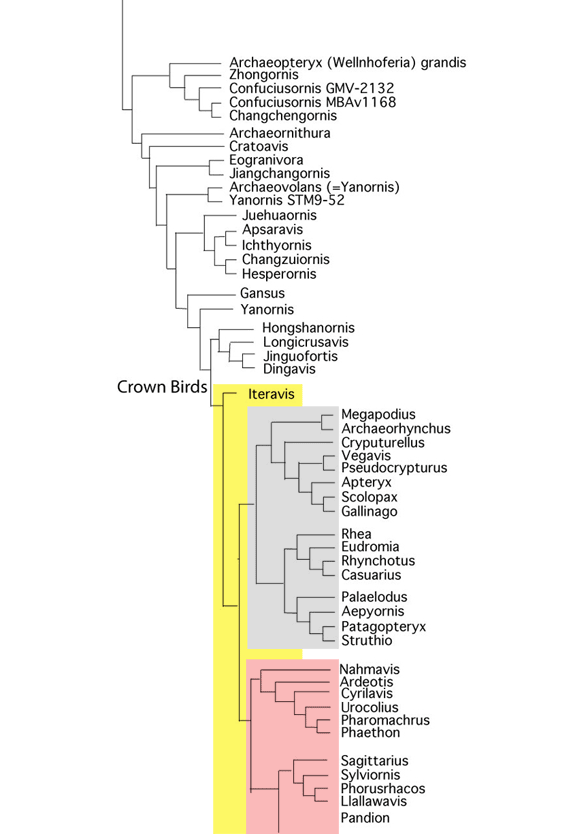Crown birds
“include the most recent common ancestor of all modern birds, and all of its extant or extinct descendants.”
Here
in the large reptile tree (LRT, 2017 taxa) the most recent common ancestor of all modern birds is Megapodius, the scrubfowl (Figs. 1, 2). That means if you have a flock of Megapodius living at the K-T boundary, you can evolve all the birds that appear in the post-Cretaceous era.

Traditional bird cladograms
consider scrubfowl close to Gallus the chicken (and by definition, the Galliformes). Superficially there is a resemblance, but the LRT separates these clades by about seven nodes.
Today
Megapodius is found only in Australia and Western Pacific Islands, far from the explosion and fallout of the K-Pg event, literally on the other side of the planet (Fig. 3)…
…which is exactly where you want to be according to Wired.com
who created a “You might survive” zone (Fig. 4). This happens to more-or-less coincide with the known range of Megapodius and its fossil taxa. The islands were surrounded by moderating oceans, so neither fire nor freeze would have been lethal.

Whatever helped scrubfowl adults survive the K-T event
goes double for their eggs, which are buried under mounds of soil and vegetation created by their hopeful parents. Scrubfowl hatch out ready to take care of themselves, distinct from more derived birds that need parental care.

Perhaps the first post K-T generation of scrubfowl
had to take care of themselves in a world where, for a week or two, there were no dinosaurs or birds anywhere on the planet… and then, one-by-one little scrubfowl hatched to repopulate the planet, evolving over millions of years to fill every niche.
On the other hand,
currently Latest Cretaceous Asterornis nests as a derived taxon, with geese. Early Cretaceous Hongshanornis is the proximal outgroup to crown birds. That gives crown birds the entire Cretaceous to radiate and diversify. At present, bird radiation might go both ways: fast (after the K-Pg event) or slow (radiating through the entire Cretaceous, but preserving only a few taxa that entire time).
References
Claeys P 2007. Impact events and the evolution of the Earth. Advances in Astrobiology and Biogeophysics. In: Lectures in Astrobiology DOI:10.1007/978-3-540-33693-8_9
https://www.wired.com/story/how-to-survive-a-killer-asteroid/


